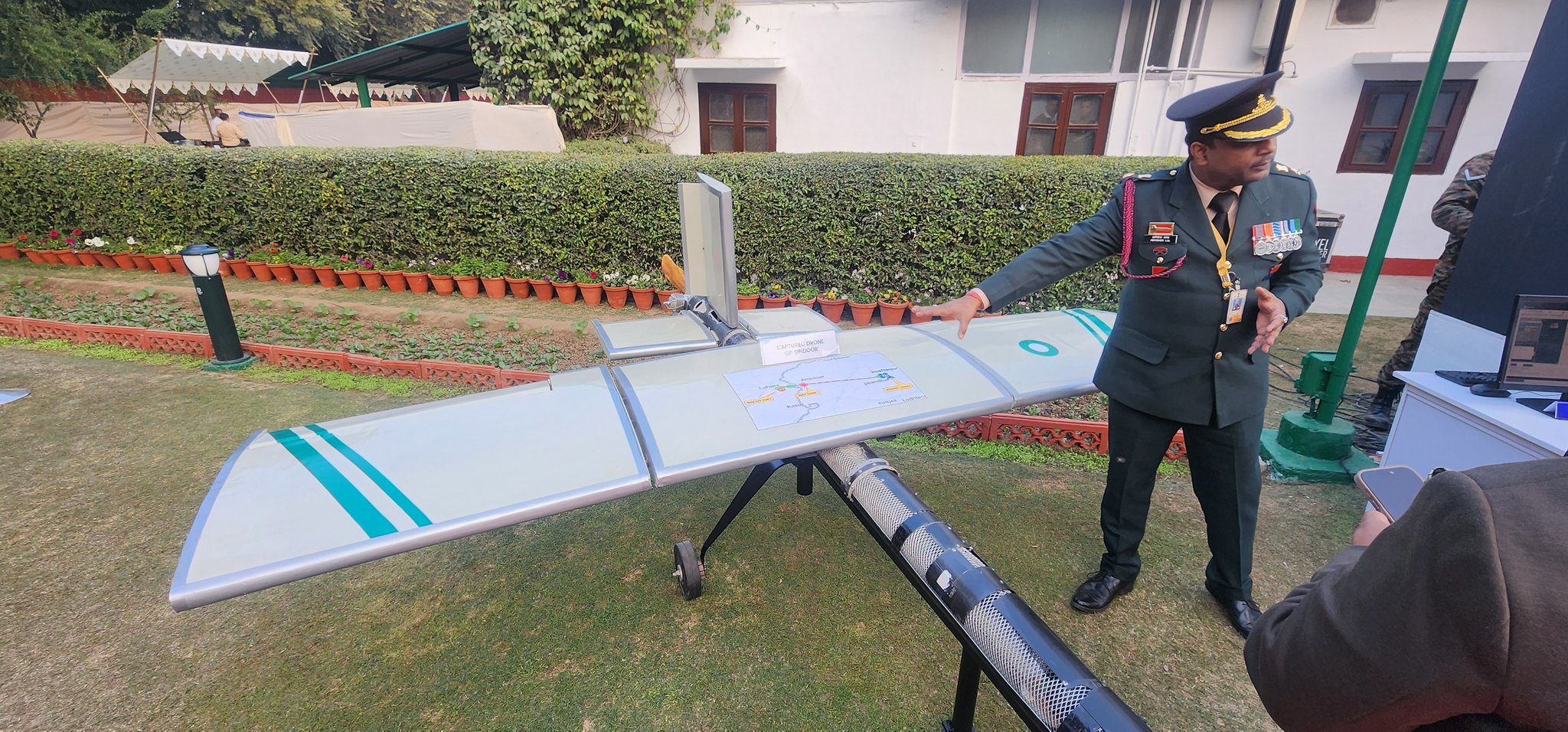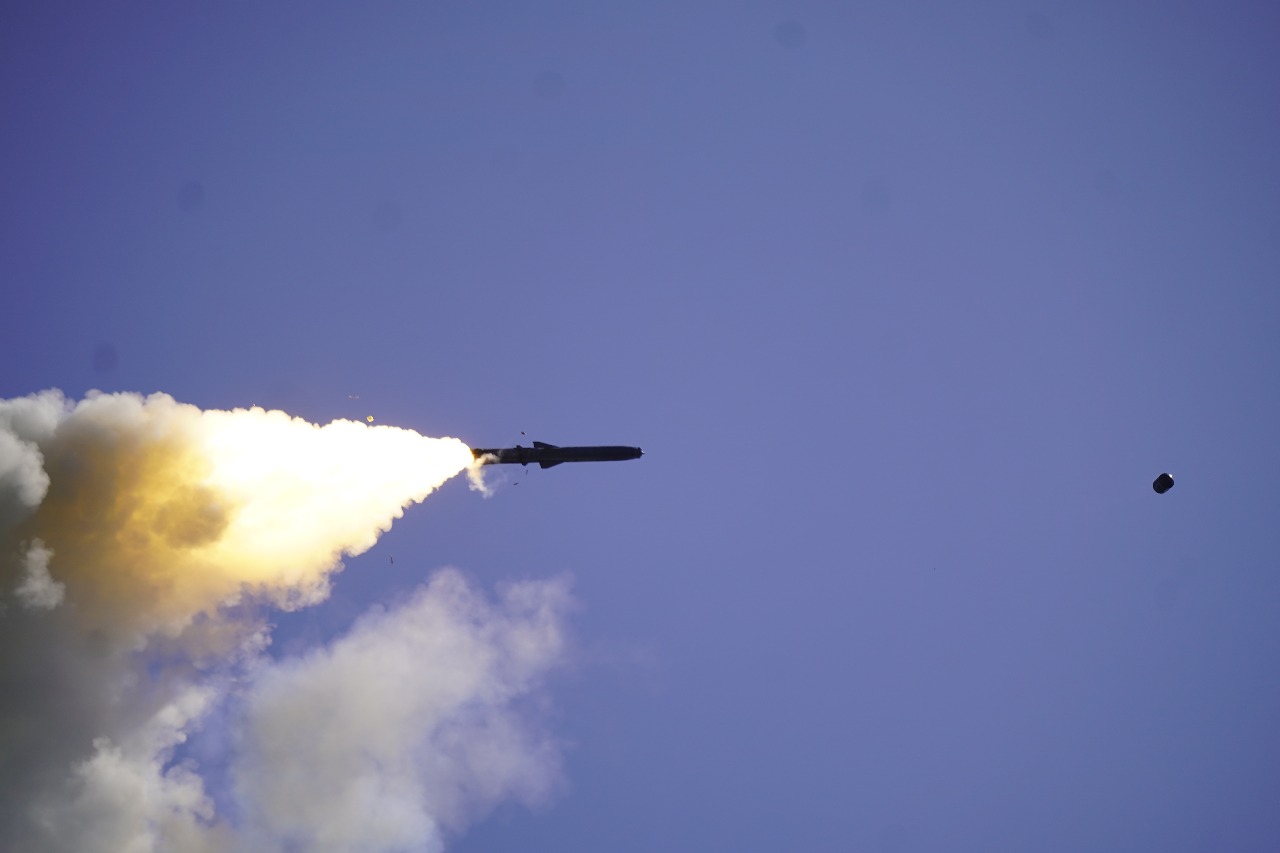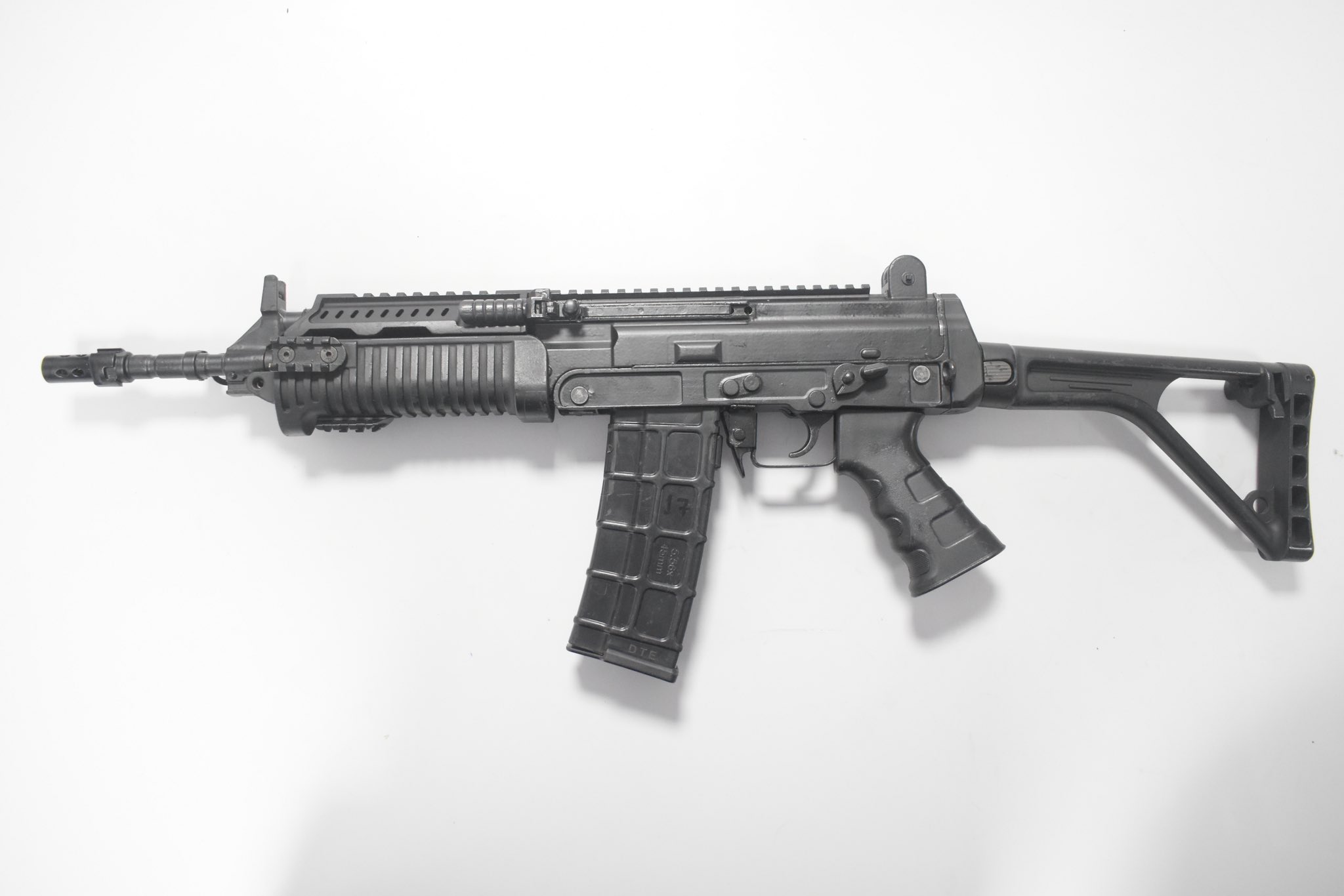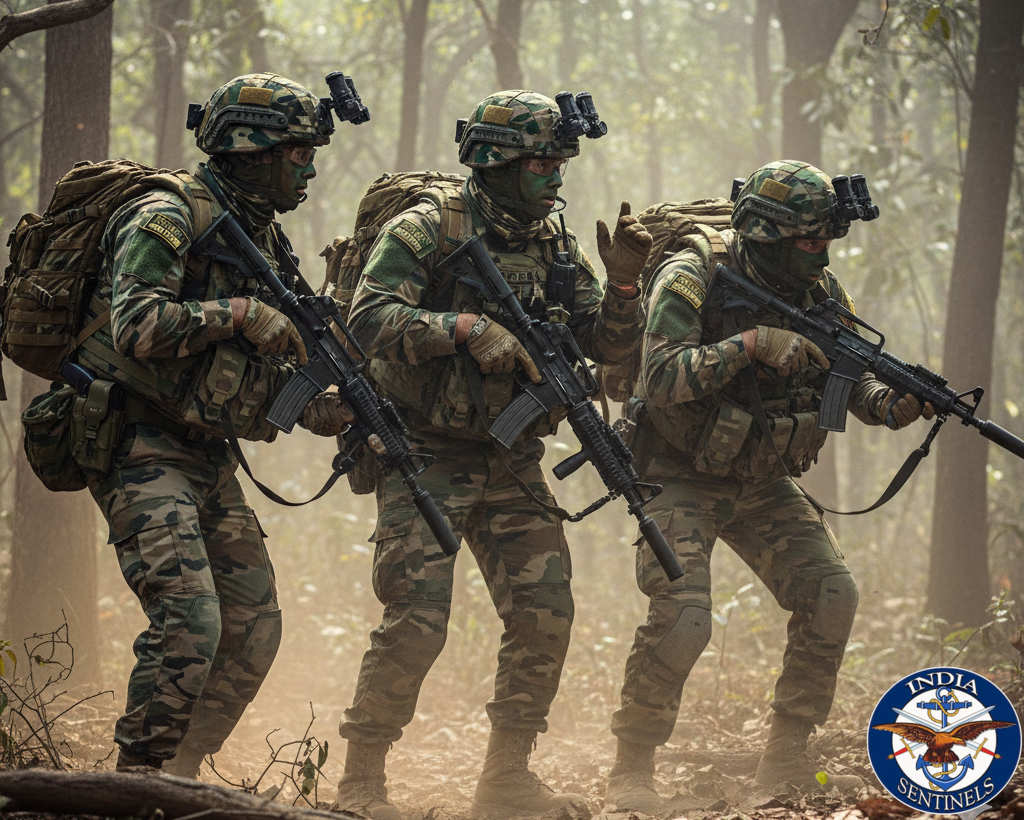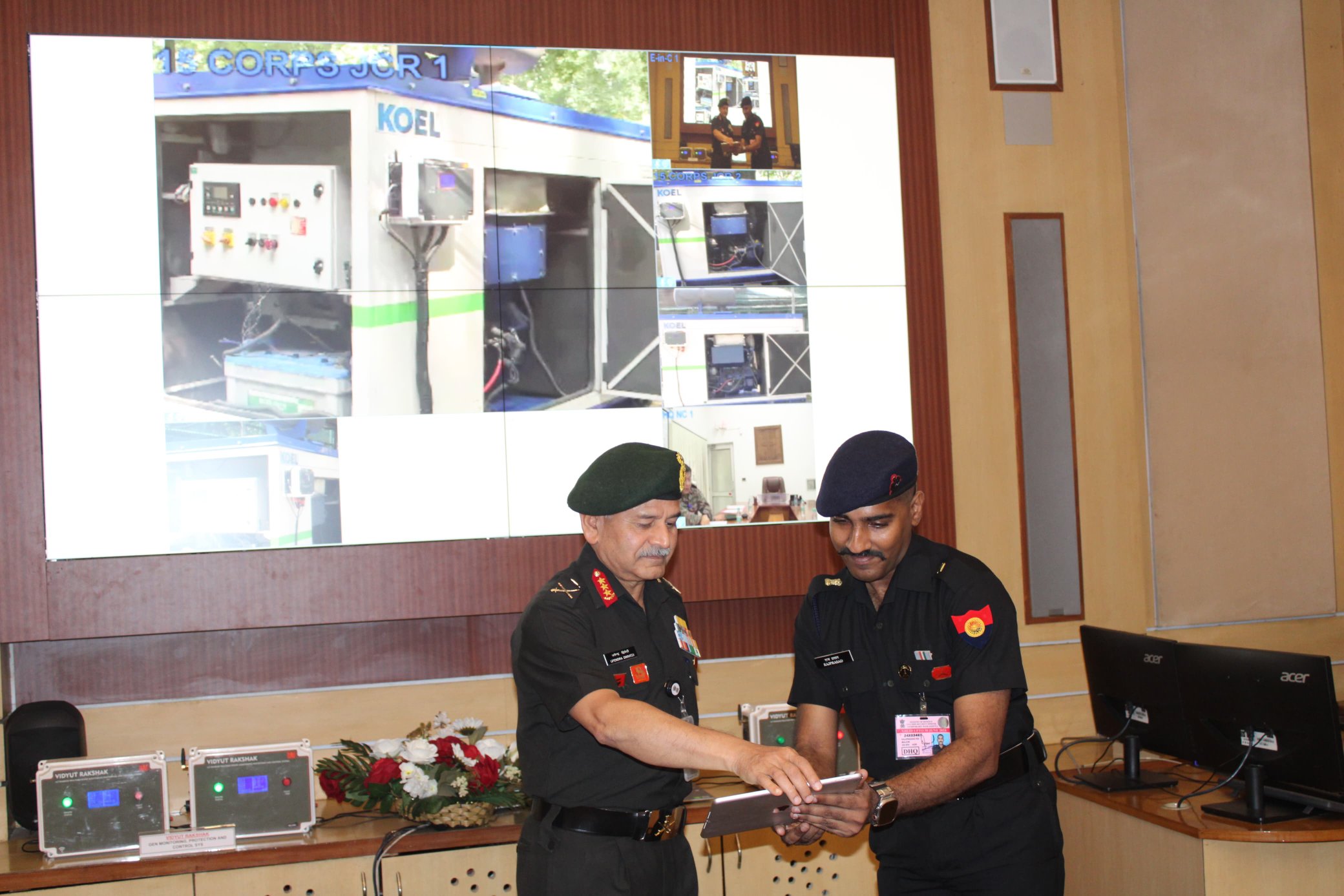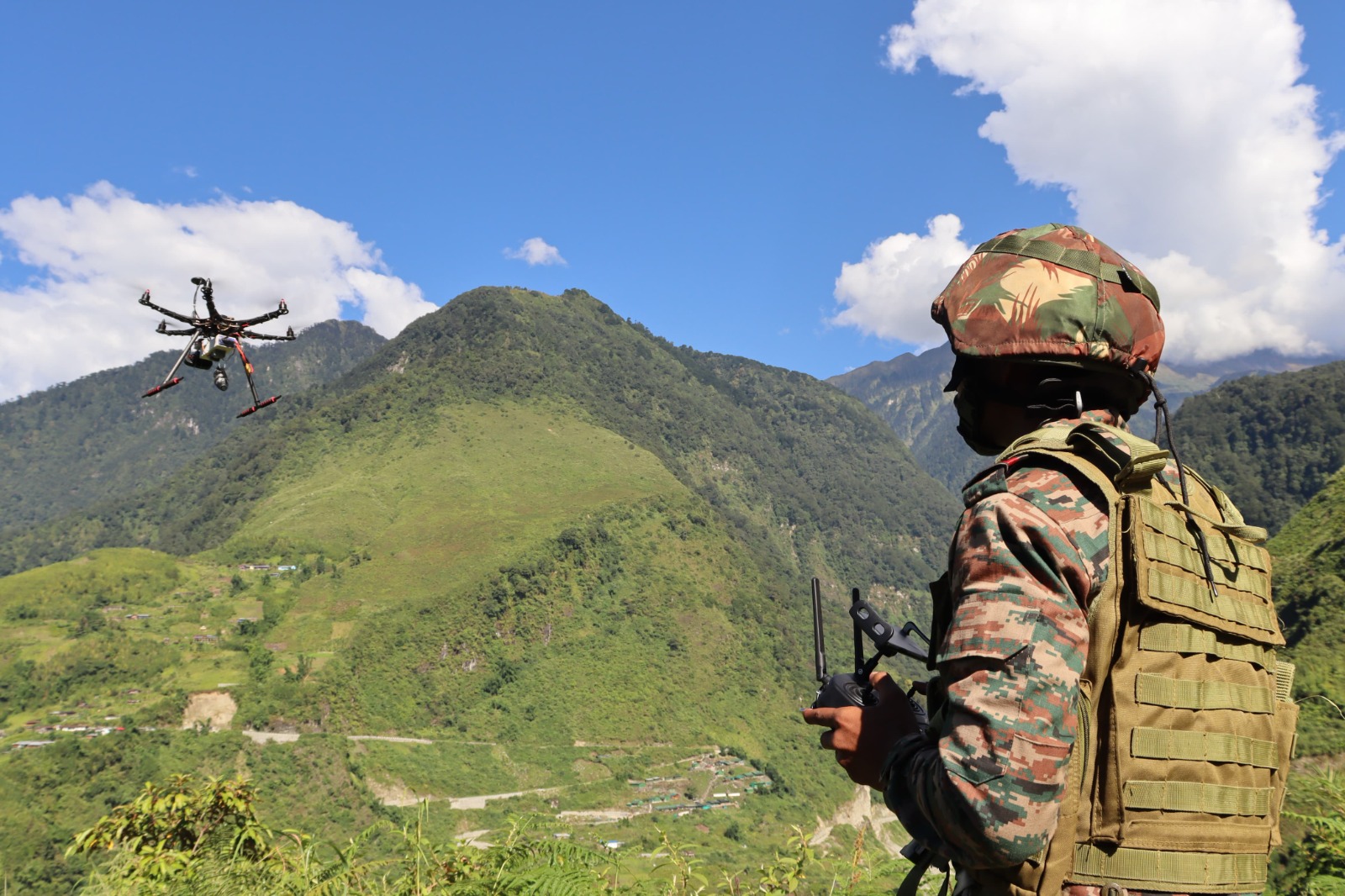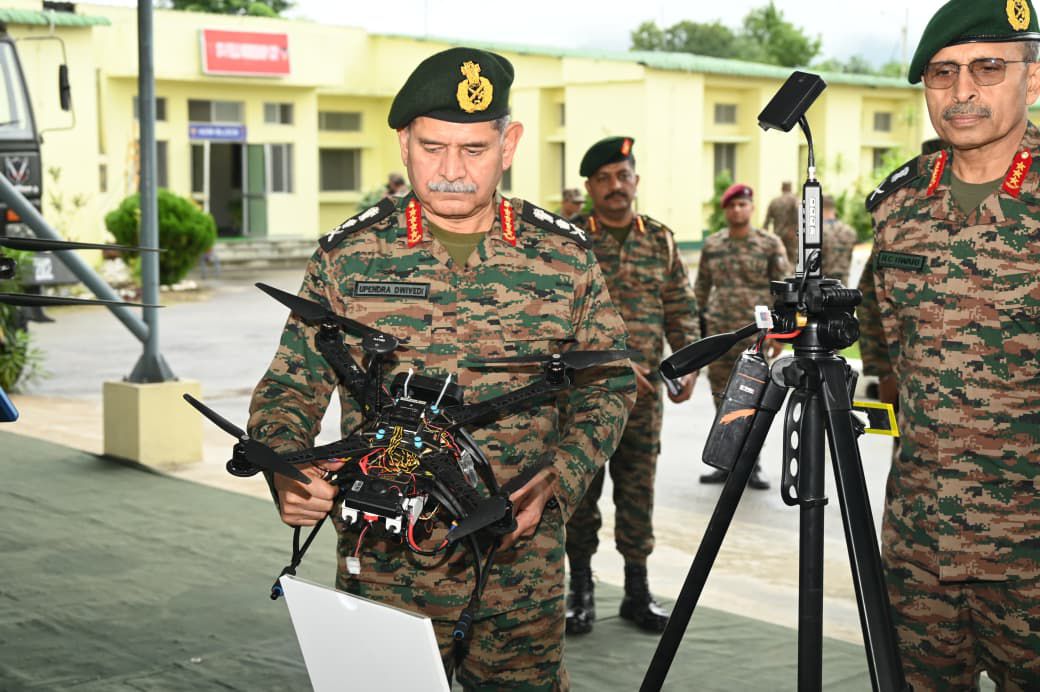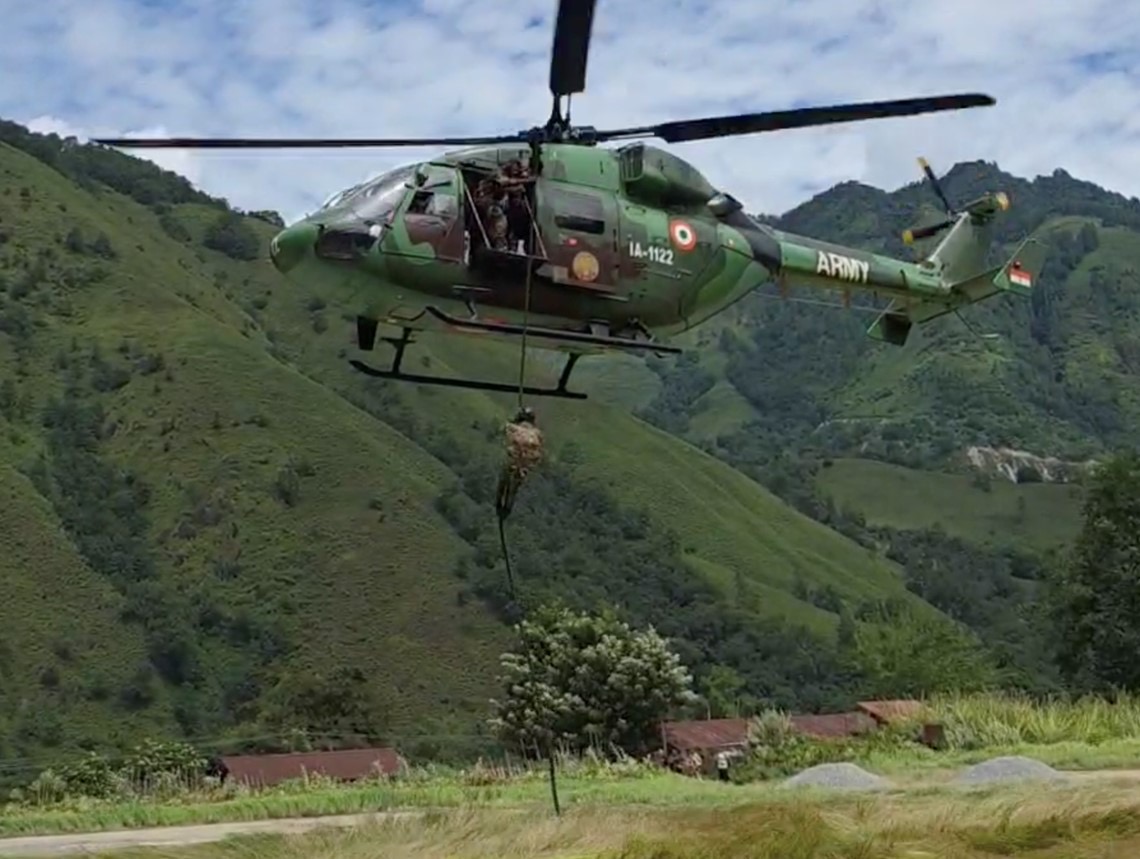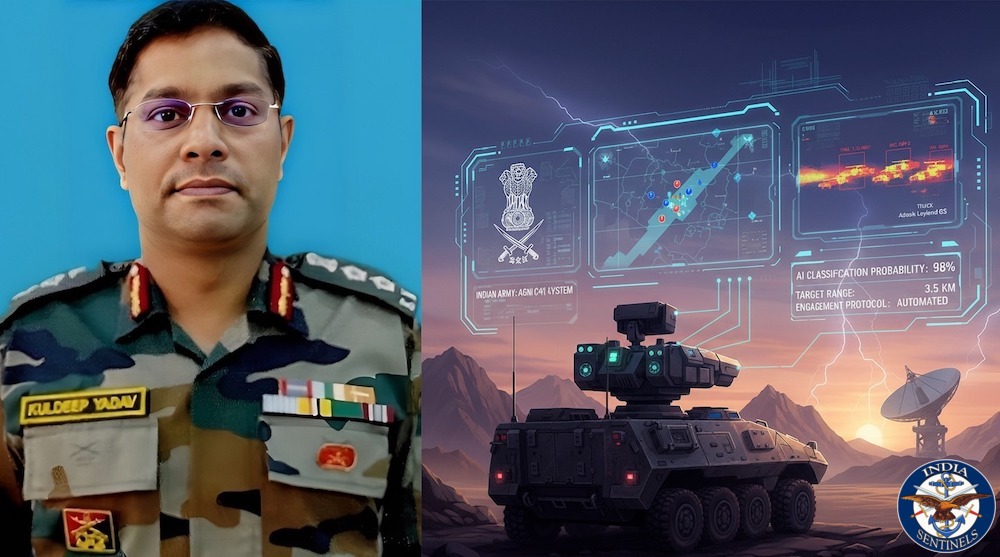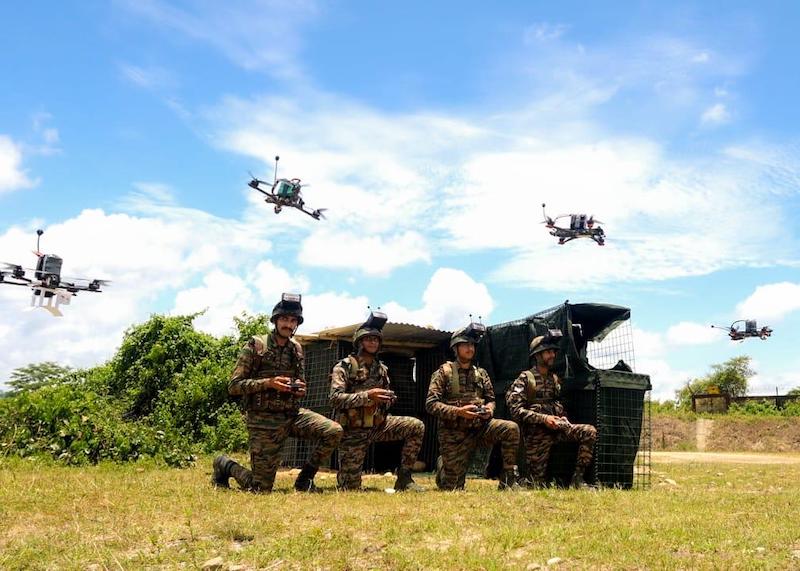 Indian Army soldiers operating drones during Exercise Drone Prahar. (Photo: Indian Army)
Indian Army soldiers operating drones during Exercise Drone Prahar. (Photo: Indian Army)
New Delhi: The Indian Army has successfully conducted Exercise Drone Prahaar – a comprehensive military drill that demonstrated the sophisticated integration of unmanned aerial systems into frontline combat operations. The exercise, observed by Lieutenant General Abhijeet S Pendharkar, general officer commanding of the Dimapur-based III Corps, also called Spear Corps, marks a significant milestone in the force’s technological modernisation efforts.
Conducted under realistic battlefield conditions, the exercise validated the deployment of drones across multiple operational domains. Infantry units and supporting arms demonstrated seamless coordination using unmanned systems for intelligence, surveillance and reconnaissance missions, establishing real-time sensor-to-shooter links that enable precision targeting across tactical and operational battlefield layers.
The drill focused heavily on enhancing command reach and situational awareness for tactical commanders through layered surveillance networks. This approach supports dynamic decision-making processes that are crucial in modern warfare scenarios, where rapid response capabilities can determine mission outcomes.
 GOC III Corps Lt Gen Abhijeet S Pendharkar (3R) at a stand checking a drone on display. (Photo: Indian Army)
GOC III Corps Lt Gen Abhijeet S Pendharkar (3R) at a stand checking a drone on display. (Photo: Indian Army)
Technical integration challenges
Beyond operational deployment, Exercise Drone Prahaar addressed critical technical enablers essential for effective battlefield drone integration. The exercise tested airspace deconfliction protocols, secure communications systems and coordination mechanisms across multiple military arms and services. These elements are fundamental to preventing fratricide incidents and ensuring effective joint operations in complex electromagnetic environments.
The successful demonstration of these capabilities reflects months of preparation and training, with units working to master both the technical aspects of drone operation and the tactical integration required for effective battlefield employment.
This exercise aligns with the Army’s broader vision of building a technology-enabled force capable of addressing contemporary security challenges. The service has been systematically adopting niche technologies to enhance operational preparedness and adaptability, recognizing that future conflicts will increasingly depend on technological superiority and rapid information processing capabilities.
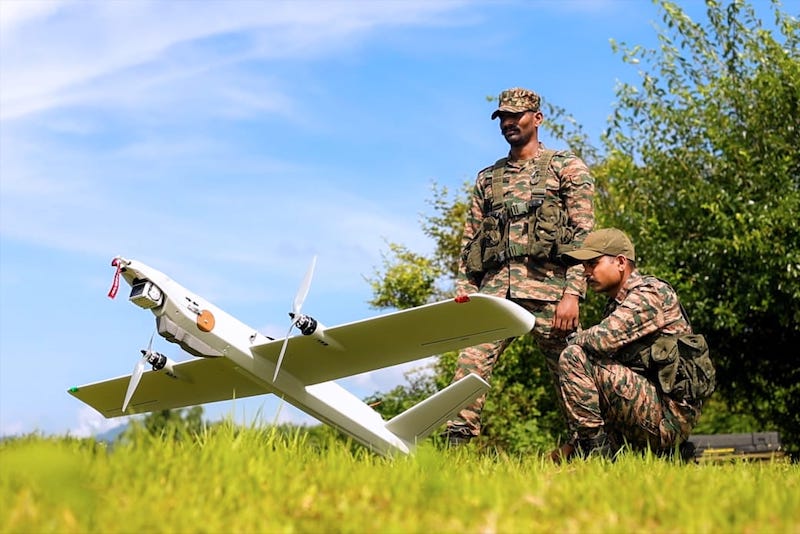 Soldiers operating a UAV during Exercise Drone Prahar. (Photo: Indian Army)
Soldiers operating a UAV during Exercise Drone Prahar. (Photo: Indian Army)
Part of Military Modernization
The drone integration programme represents part of India’s wider military modernization efforts, which have accelerated in recent years amid evolving regional security dynamics. The country has been investing heavily in indigenous defence technologies while also incorporating proven international systems to enhance its operational capabilities.
Exercise Drone Prahaar’s success demonstrates the Army’s commitment to innovation and agility in adapting to modern warfare requirements. The drill’s outcomes will likely inform future procurement decisions and training programmes as the force continues expanding its unmanned systems capabilities across different operational environments.
The exercise reflects broader global trends in military modernisation, where armed forces worldwide are integrating unmanned systems to reduce risk to personnel while enhancing operational effectiveness. The Army’s approach emphasizes both technological adoption and tactical innovation, ensuring that new capabilities are properly integrated into existing operational frameworks.

